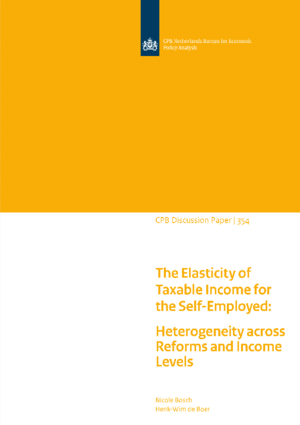The Elasticity of Taxable Income for the Self-Employed: Heterogeneity across Reforms and Income Levels
We estimate an ETI of 0.3 for the self-employed. Individuals respond stronger to the major tax reform in 2001 than to two smaller reforms in 2005 and 2007. We reveal significant heterogeneity in ETI across the income distribution and occupational choice. Contrary to earlier studies, the ETI is higher for self-employed with a lower income than for self-employed with a higher income. We also find that self-employed respond much stronger to financial incentives than wage earners. However, there is little heterogeneity in responses for demographic subgroups: women only have a slightly higher ETI than men, and the ETI is roughly similar across educational levels. We carefully assess our instruments using recent insights in the ETI literature. Instruments based on lagged income are not preferable for our sample of self-employed who experience high variation in income. And the choice of sampling weights - base-year income or lagged income - matters in our analysis which again demonstrates the high heterogeneity across income levels.
